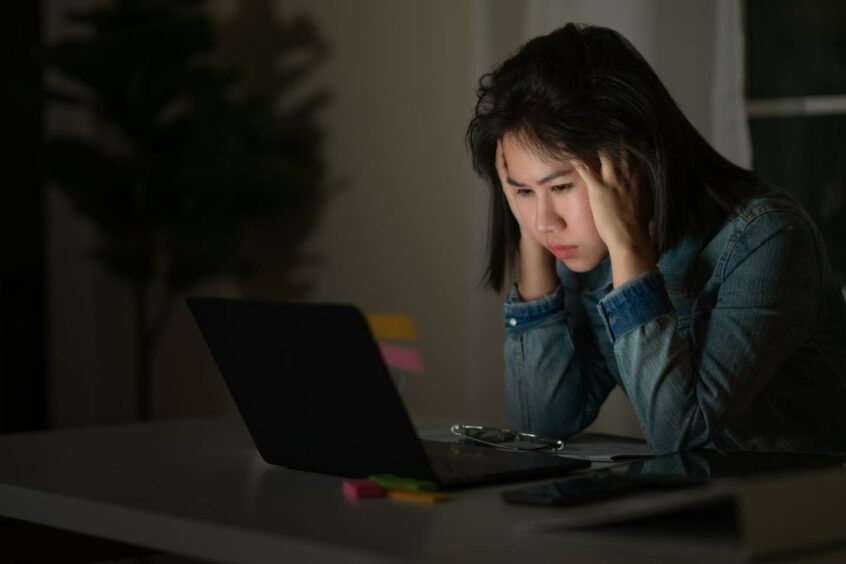Increased use of staff surveillance by employers during the Covid-19 pandemic is impacting employee mental health, says a new report by St Andrews University.
The study warns employers excessive monitoring of staff can lead to mental health issues, productivity decline and resignations.
Webcam photographs, recording keystrokes and movement trackers have all been increasingly used by employers throughout the pandemic.

This increase comes as millions of workers were forced to work from home in 2020 and into this year.
The demand for employee monitoring software increased by 108% in April 2020, according to the report.
Activity apps
As a result, some employees are taking matters into their own hands, downloading apps such as Move Mouse or Wiggler to give the illusion they’re at their desks.
The apps work by making a simple mouse movement or click every few seconds, to make it look like users are actively using their laptops or computers.
One local, who works in IT, says: “I’ve been working from home full-time since March 2020.
“One day I was away from my desk getting a coffee and my boss had been trying to get in touch with me.
“When I got back to my desk, my boss asked where I’d been.
‘I was worried they’d think I was skiving’
“I hadn’t missed anything important, but it made me anxious about being present on my PC, even if I was working on other things or on calls.
“It started to feel like spying. And I felt I couldn’t be away from my computer for more than a few minutes, in case my boss was looking for me.

“I worried they’d think I was skiving if they saw I was ‘away’ on Teams.
“I downloaded Move Mouse just for peace of mind and to stop feeling so anxious about taking breaks from work.”
The impact on employee satisfaction
Author Professor Kirstie Ball of the St Andrews University says: “There is a clear need for trust to be rebuilt in the workplace between staff and employers post-Covid.
“Where monitoring has a specific purpose such as health and safety, it can actually reassure staff. Or in development and training it can provide valuable feedback.
“However, it can also have negative impacts too. A heavy focus on monitoring the quantity of output can reduce work quality.

“Where there is no explicit purpose for monitoring, and information is being collected for its own sake, negative attitudes can result.
“This includes perceptions of decreased fairness and justice, decreased satisfaction, increased stress and a decline in trust.”
Excessive monitoring, according to the report, can be viewed by staff as a lack of confidence or belief in employees.
It also notes there is a danger of low managerial support for monitored employees.

